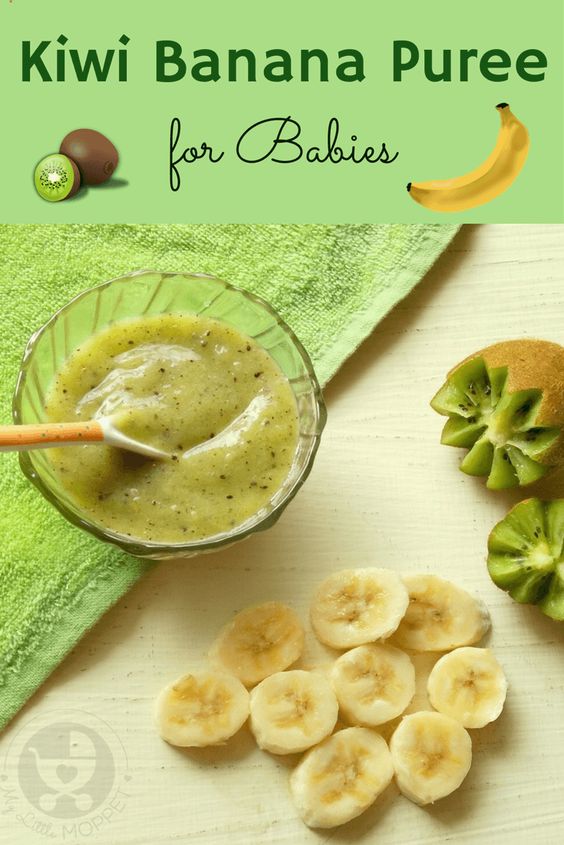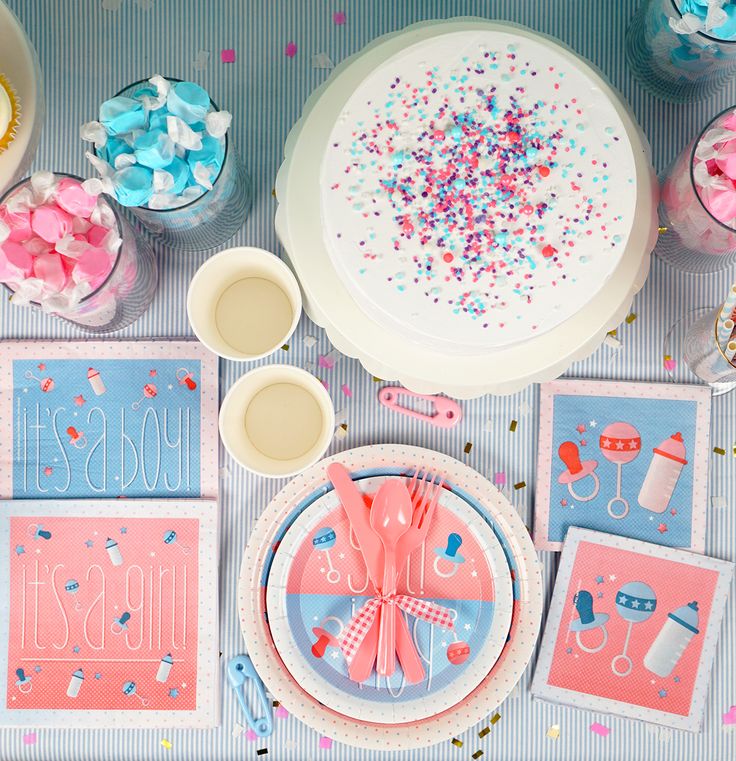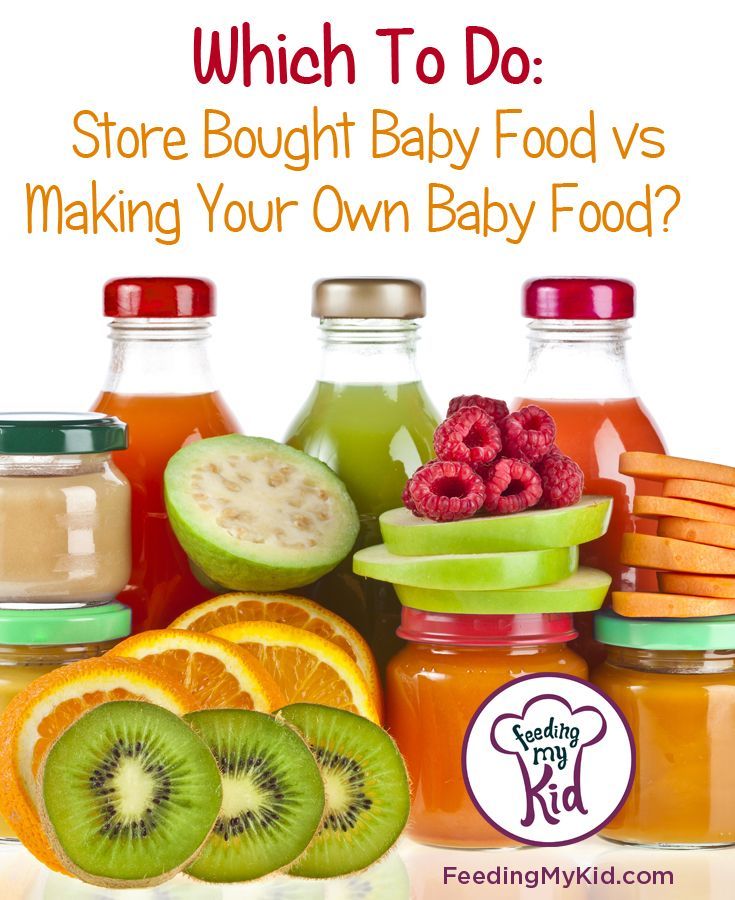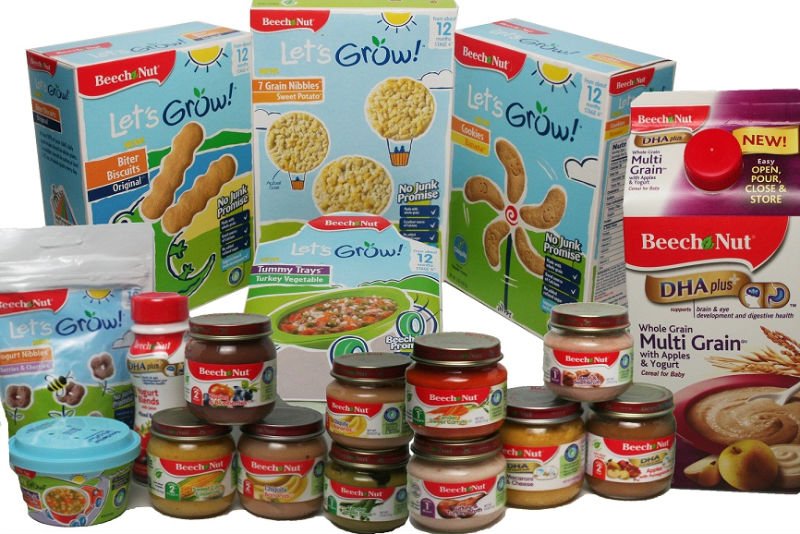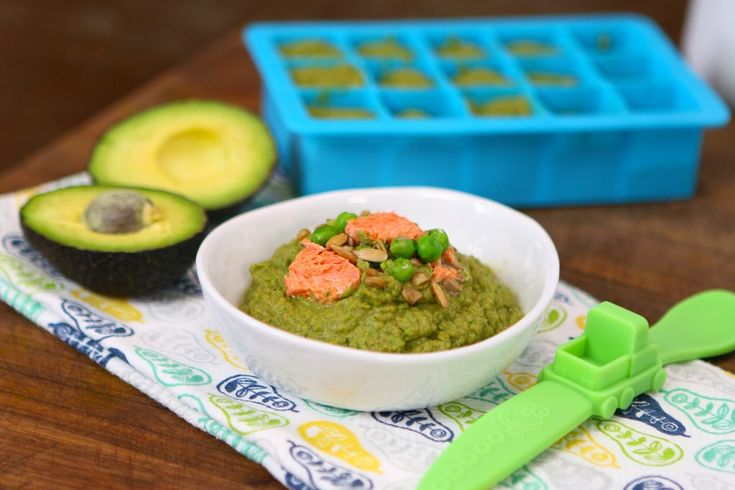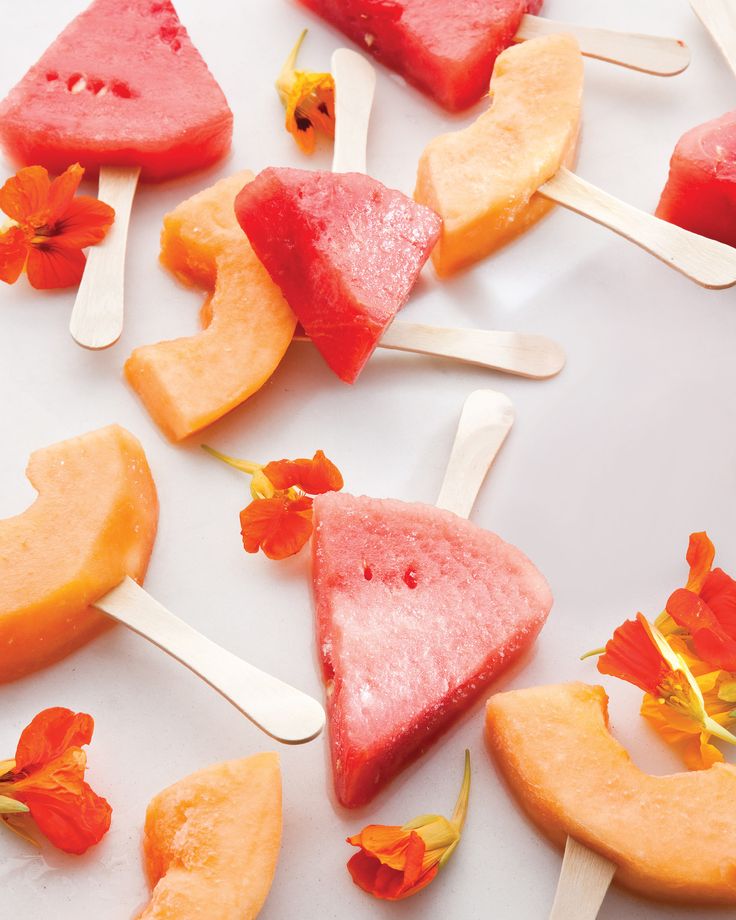Food for baby parakeets
What Can I Feed My Baby Parakeet? 5 Homemade Baby Budgie Food Recipes
Your baby is growing up! They're no longer a tiny newborn parakeet but are now an adolescent parakeet that needs to be fed.
Feeding your little feathered friend can be a daunting task, and there are many things you need to know about what they should eat.
In this blog post, we will discuss 5 homemade baby parakeet food recipes with step-by-step instructions. These recipes provide healthy nutrition without any dangerous chemicals or artificial flavors in them.
You'll also find out what types of foods baby parakeets can't eat and how much each recipe feeds!
You can feed any of these recipes to your newborn parakeets from day one to weaning if, for whatever reason, the mother parakeet is unable to feed and nurture them.
Table Of Contents
- 5 Homemade Baby Parakeet Food Recipes
- How To Prepare The Formula (Step-by-Step Guide)
- How To Feed The Formula To Your Baby Parakeet
- How To Preserve The Formula
- FAQ
- Don't Forget Your Pet Parakeet Must-Haves!
The following recipes are hand-feeding formulas that can be fed to your baby parakeet from the time it is hatched from the egg until it is time to wean and eat a regular diet of seeds and pellets.
- Check this post out to learn more about caring for baby budgies when their mother cannot!
These homemade formulas will help your baby parakeet to grow quicker and wean sooner, in addition to developing a brighter, fuller plumage.
We tend to gauge the measurements by eye when it comes to the dry ingredients such as ground oats and ground wheat, as you will find yourself adjusting the recipe based on what you have in your pantry and what your bird prefers.
Trending
The Best Automatic Parakeet Feeder: Top 3 & Review
As long as you include good, whole sources of protein and fats and stay away from foods your bird shouldn't eat, your parakeet will be happy!
Baby parakeets require a high-protein diet and their stomachs are relatively small which requires them to eat small amounts of food at each meal.
1) Cornmeal, Ground Oat, Boiled Egg (whole), Coconut OilCornmeal is a good source of protein, calcium, and Vitamins B & E. Ground oats provide fiber as well as minerals iron, copper, and zinc.
Ground oats provide fiber as well as minerals iron, copper, and zinc.
Boiled eggs have a lot more nutrients than raw eggs, which are difficult to digest when eaten by baby birds who do not produce the proper enzymes needed to break down such food items quickly.
2) Ground Oats, Chia Seeds, Ground Corn, Dried Beetroot pulp
In this recipe, the ground oats provide a source of protein, calcium, and Vitamins B & E.
Chia seeds provide fiber as well as minerals iron, copper, and zinc.
Ground corn is rich in antioxidants and dietary fibers, while beetroot provides Vitamin A, which leads to a vibrant bright color of your baby parakeet's plumage by providing beta-carotene.
3) Ground Wheat, Egg Protein Powder, Ground Flaxseed, Dried Pumpkin
In this recipe, the pumpkin provides a source of Vitamins A, C, and E.
Flaxseed is rich in Omega- fatty acids while wheat provides a good amount of protein and fiber.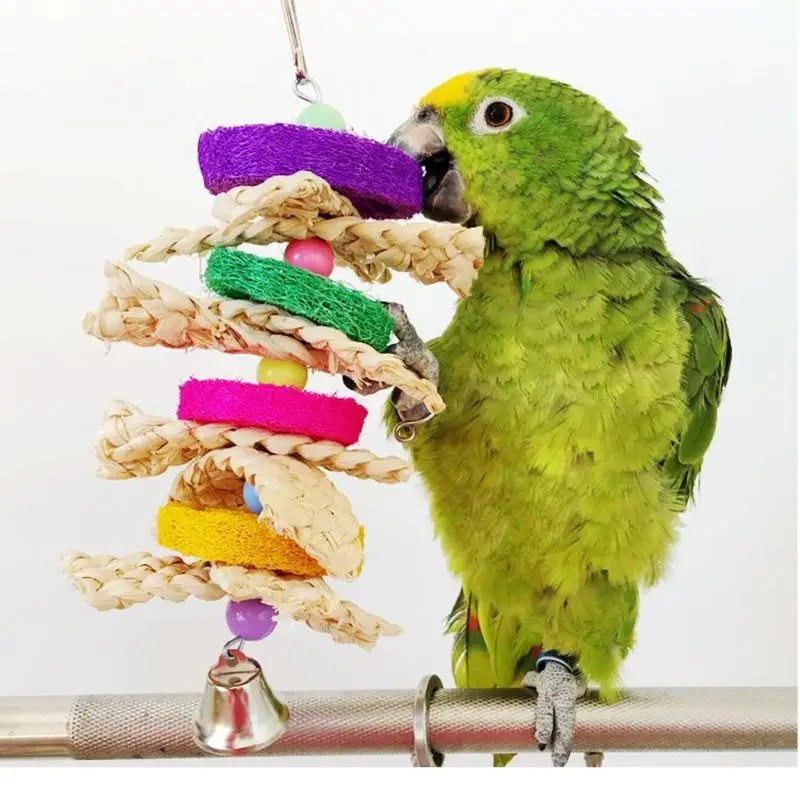
Egg Protein Powder contains all the essential vitamins and minerals for baby parakeets that are not able to be found from other ingredients listed in this recipe, as well as beta-carotene.
Trending
What Kind Of Nest Do Parakeets Need? Choosing The Right One
4) Ground Brown Rice (or Arrowroot Powder) , Dried Peas, Dried/Ground Sunflower Seeds
This recipe contains rice which is naturally enriched with Vitamin B.
The peas provide a source of protein and fiber, while the whole wheat flour provides Vitamins A and E as well as zinc for your baby parakeet's feather coloration.
Some birds do not like rice, so if you find that this is the case, for any recipe with ground brown rice listed, try replacing it with arrowroot powder).
5) Ground Oats, Ground Brown Rice (or Arrowroot Powder), Soy Protein, Flaxseed
This recipe contains oats that are naturally rich in Vitamin E.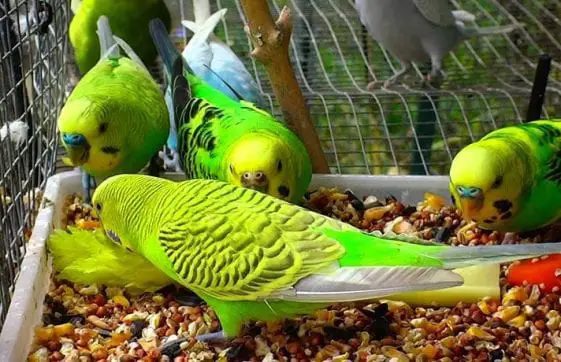 The brown rice provides a source of Vitamins A and B as well as zinc, while the soy protein is enriched with all eight essential amino acids.
The brown rice provides a source of Vitamins A and B as well as zinc, while the soy protein is enriched with all eight essential amino acids.
The flaxseeds contain omega-fatty acids, magnesium, manganese, phosphorus, and phytoestrogens.
How To Prepare The Formula (Step-by-Step Guide)We recommend that you only use one of these at a time and see how your baby parakeet likes them.
- Combine all ingredients in a bowl.
- Place them in a high-speed blender for 30-60 seconds until you have a smooth (not thick and sticky) consistency.
- Add all ingredients to a saucepan and bring to a boil with constant stirring for three minutes.
- Add more water if/when needed to maintain a thick liquid consistency.
- Remove from heat and let cool until the mixture is lukewarm but not cold.
- Feed your baby bird!
We also recommend adding some bird vitamin drops to your homemade formula for a vitamin boost. This should be added to the individual feed and not the entire batch, so you can manage how much you are giving your parakeet at any given feed.
If you have quite a busy schedule, it can be quite time-consuming to make your own baby bird feed. No worries, we've got you covered. This high-fat, nutrient-dense hand-feed formula will do just as well.
Trending
The Best Bird Cages For Parakeets (Affordable Home Cages For Budgies)
Sale
Kaytee Exact Hand Feeding High Fat Formula Pet Bird Baby Food For Parrots, Parakeets, Lovebirds,...
- Balanced high-nutrient formula helps babies grow faster, wean earlier and develop stronger, brighter plumage.
- Contains probiotics to encourage a healthy population of intestinal microorganisms.
- Digestive enzymes are included to ensure adequate digestion of carbohydrates and proteins. These enzymes offer a particular value to a newly...
- Exact Hand Feeding Formula has compatible tastes and ingredients with exact Conversion and exact Adult Daily Diets to help reduce digestive.
 ..
.. - This product is formulated for use with: Baby Parrots (includingParakeets, Lovebirds, Cockatiels, Conures, Cockatoos, Macaws,Amazons, African...
You will need baby bird feeding syringes to feed formula to your baby bird. This is the “least messy” way to feed them. The tip of these syringes curves to allow easy feeding into your bird's beak.
You can also use a baby spoon, but it will be more difficult to get the food into their tiny beaks.
How To Preserve The FormulaIf you have used any wet ingredients, you will need to freeze the formula. We recommend freezing it in an icecube tray so you can separate and defrost smaller portions.
If you wish to preserve the formula as a powder instead, replace the wet ingredients with a dried variety (or dry them yourself).
Combine the ingredients and place them in a blender for 30-60 seconds (or until they become a fine powder.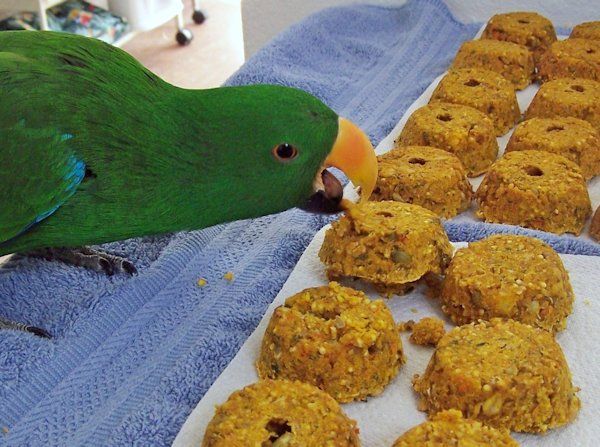 )
)
Store them in an airtight container until needed.
Once you have the blended powder formula in a container, you simply take out a few teaspoons at feeding time and blend with boiled water. Let it cool, or add cool boiled water before feeding your baby bird.
FAQCan Baby Parakeets Eat Baby Food?
No. Baby parakeets, regardless of age, require a high-protein diet. Baby parakeets are relatively small, and their smaller stomach requires that they eat small amounts of food at each meal.
Seeds and pellets should make up the bulk of a baby parakeet's diet, supplemented with fresh fruits and vegetables every day (in appropriate portions).
The problems seen in captivity documented by avian veterinarians include stunted growth of the body organs internally as well as halted growth on the outside. When these birds are fed foods that are not natural to them, they may not grow properly and exhibit behavioral disorders.
Do Baby Parakeets Need To Be Hand-Fed?
Newborn parakeets who do not have their mother to feed them do need to be hand-fed their formula.
This is just to ensure that they are getting the nutrients and energy that their bodies need to grow. It can be quite difficult for a tiny, developing bird to get the formula into its mouth and consume enough of it to grow.
Trending
Top 3 Best Probiotics For Parakeets: Giving Your Bird A Healthy Balance
Feeding it formula through a syringe directly into its beak is the best way until they begin to wean, and you can put a thicker formula mixed with small pellets on a surface or in a dish.
Don't Forget Your Pet Parakeet Must-Haves!
AA Plus Shop Spray Millet Treat Feed for Birds...
Absolutely Clean Amazing Bird Cage Cleaner and...
Sale
Miracle Care Kwik Stop Styptic Powder, 0.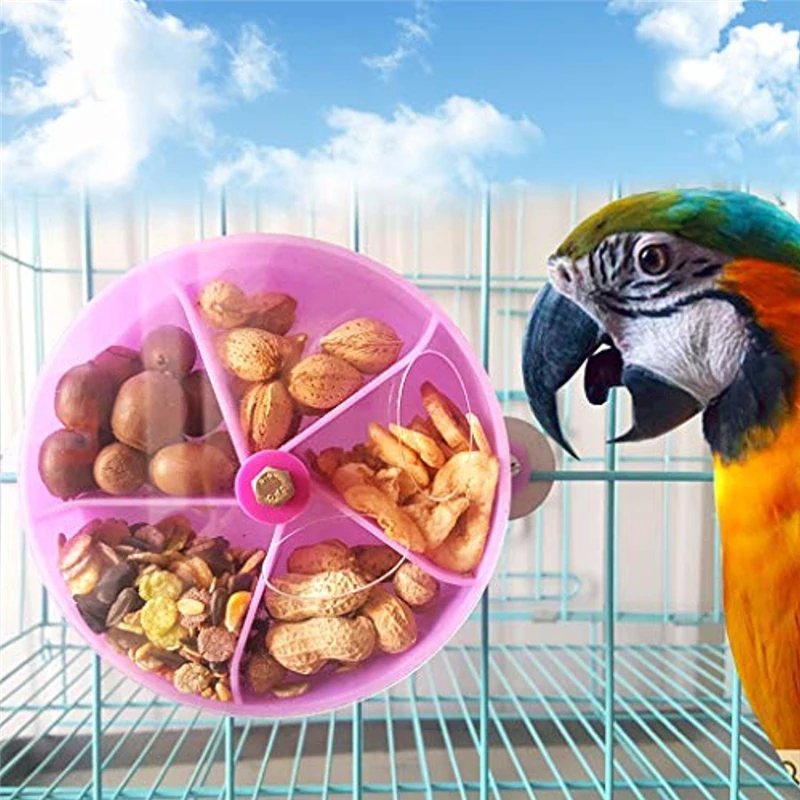 5 Oz
5 Oz
LAFEBER'S Gourmet Nutri-Berries Pet Bird Food...
Marcus G
“I love exotic birds and have kept several throughout my life. Most people know me for my knowledge of animals and love for writing”
Last update on 2022-04-19 / Affiliate links / Images from Amazon Product Advertising API
Feeding Baby Parakeets | Parakeet Chicks | Parakeets | Guide
Rearing chicks by hand is very time-consuming, and should not be done without full appreciation of what’s involved. Always make sure to seek expert advice for any aspect of chick-feeding, and take time to watch some instructional videos. This will boost your confidence and minimise the chance of you messing something up.
Even if you have a healthy pair of birds doing all the hard work for you, you should still know what to do if things don't quite go to plan. Mishaps could be anything from a sick male bird (meaning that he won’t be able to feed the hen) to an abandoned nest.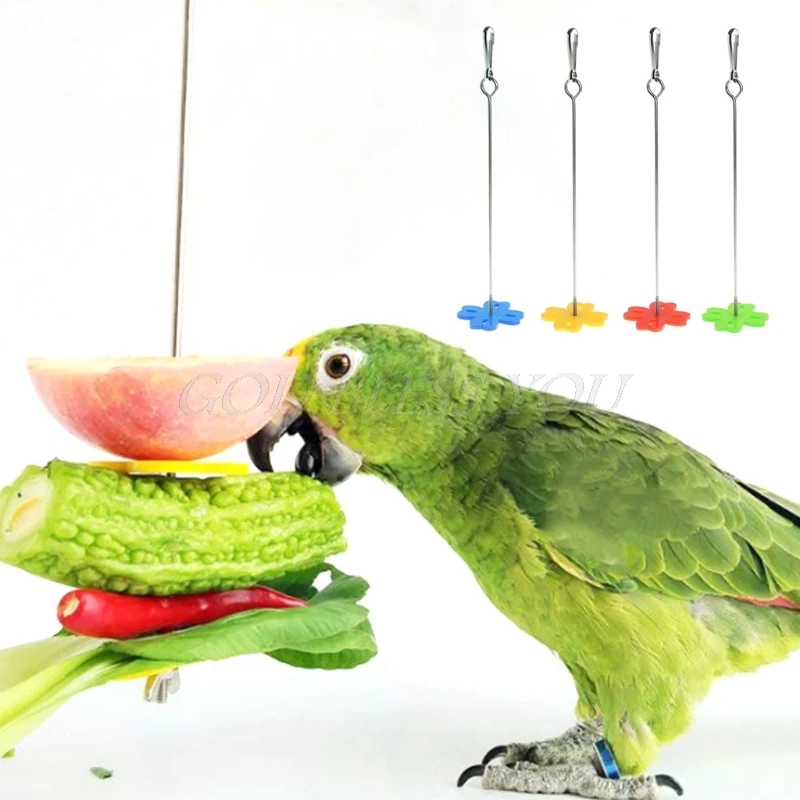 Baby parakeets are very delicate creatures, and if the mishap occurs early in the rearing process -- within the first two weeks -- your chances of successfully weaning the birds are slim. Rearing a freshly-hatched bird is something none but the most experienced breeder should attempt.
Baby parakeets are very delicate creatures, and if the mishap occurs early in the rearing process -- within the first two weeks -- your chances of successfully weaning the birds are slim. Rearing a freshly-hatched bird is something none but the most experienced breeder should attempt.
A six-week-old parakeet
Feeding Parakeet Chicks
There are several parakeet chick feeds and additives that can be purchased online or in larger pet-stores.These should offer the correct mix of nutrients, vitamins and minerals needed to raise the chicks. Always make sure to consult with an expert before opting for any particular brand. Don’t be tempted to make a choice based on price, as cheap mixes are often not good enough for such fragile, young creatures.
Chick food should be mixed according to the instructions on the packet. It will usually have a gloopy consistency, and, like Baby Bear’s porridge, should be neither too hot nor too cold. If the feed is too hot, it can scald the bird’s crop and throat: if too cold, it may lodge itself in the chick’s crop and lead to a fatal condition known as “sour crop”. Again, just make sure you read the instructions.
Again, just make sure you read the instructions.
The food each chick receives should be carefully measured, and should be served at a temperature similar to that of the regurgitated seed of an adult bird (the chick's natural food source). You can use a thermometer to measure the temperature precisely. Never be tempted to heat up the food quickly in the microwave, as this can lead to hot spots in the food. An ideal temperature for this food is between 105-110F.
How to Feed Parakeet Chicks
The food can be offered on a plastic spoon with bent edges (dip the end of a standard plastic teaspoon in boiling water and then bend the edges inward -- this funnels the food into a relatively narrow gap), or alternatively you can feed them via a wide-nozzle syringe. Many breeder rig up their own spoon-syringe hybrid
The syringe is good as it allows you to measure the quantity of food you are administering` There are however choking hazards to beware of though, so a spoon is advisable once the chick is old enough to feed this way (at around 10 days old). The spoon allows the chick to swallow the food at it’s own pace, but does not recreate the “regurgitated seed” flow as well as the syringe.
The spoon allows the chick to swallow the food at it’s own pace, but does not recreate the “regurgitated seed” flow as well as the syringe.
Experts may sometimes opt for a “crop-needle”, this is a tube attached to the end of a syringe and inserted directly into the chick's crop. This takes a lot of care, however, and should not be attempted if you don’t know exactly what you’re doing.
No matter what feeding method you opt for, make sure all equipment is suitably sterilized before giving it to the chick, and any unused food should be discarded. Always make the food fresh and refrain from preparing it ahead of time.
Keeping a young chick warm whilst feeding them is also important. They should be placed onto a cosy towel or similar soft object for feeding. The aim here is to impersonate a soft, warm hen.
Gently tap on the bird’s beak with your spoon or syringe, just like it’s mother would. The bird will obligingly gape (open it’s beak to receive the food). Deliver the mixture sideways on, coming in at a 90 degree angle to the front of the beak (i. e. don’t feed from the front, as this could force the upper part of the beak too far upwards, and it’s not the way parent birds approach the job).
e. don’t feed from the front, as this could force the upper part of the beak too far upwards, and it’s not the way parent birds approach the job).
Don’t syringe or pour in all the food at once. The chick needs time to swallow, and can easily choke on too much too soon. It will let you know when it’s had enough, by simply closing its beak and refusing to reopen. If the bird hasn’t eaten its usual amount, don’t force-feed it. If the lack of appetite persists for the next few feeds, seek medical advice. A blocked crop can sometimes be remedied with a small squirt of warm water and some gentle crop-massage – but you really need to know what you’re doing. Always have the vet or breeder’s phone details at hand.
The food will have cleared from a healthy chick’s crop within 2-4 hours depending on it;s age, and it will need feeding every 3-4 hours. As stated above, if your chick isn’t hungry, it won’t gape. Feeding is a full time job, at least six times a day, and you can only retire at sunset. No one said this is going to be easy!
No one said this is going to be easy!
baby parakeets grow alarmingly quickly, and their food intake needs to grow with them. At two weeks old, depending on the chick’s size, they will take 2-4ml at each feed. At three weeks this increases to 4-6ml, and 5-8ml by five weeks old.
Feeding a 3 Week Old Parakeet
Things become much easier at 3 weeks old. The parakeet chick will now resemble an unkempt miniature dinosaur, with a rather ugly mix of down and pin feathers, and a lot of the character and curiosity that will stay with them throughout their lives. At this point in their lives feeding won’t be such a challenge. Usually every four hours. The bird will happily receive your attentions throughout 16 hours on a long summer’s day, though.
A five-week-old parakeet
Feeding a 5 Week Old Parakeet
At around 5 weeks old you can start putting food on the ground or in bowls, and letting the parakeet indulge in its natural instinct to forage.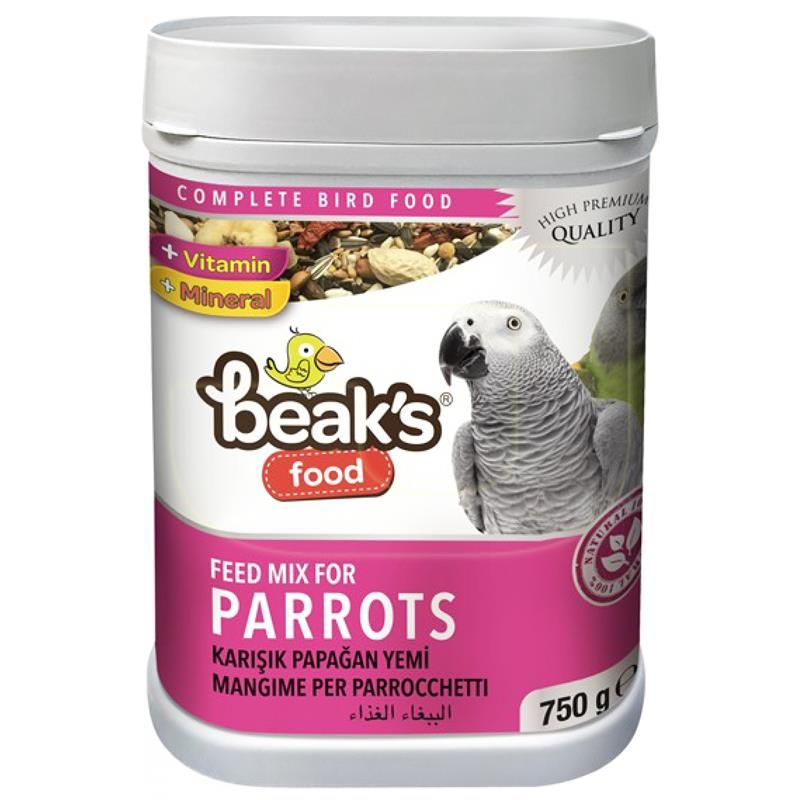 At around 6-7 weeks old the bird should be fully self-sufficient. You will still need to keep an eye on their feeding behavior, however, as not all parakeets become independent as swiftly as the average bird. Some hand feeding may still be in need at seven weeks old.
At around 6-7 weeks old the bird should be fully self-sufficient. You will still need to keep an eye on their feeding behavior, however, as not all parakeets become independent as swiftly as the average bird. Some hand feeding may still be in need at seven weeks old.
What to feed budgie chicks?
After birth, budgerigars are defenseless, they are completely dependent on their parents. The female feeds and pays attention to each of them, despite the number of offspring and their age difference.
In the beginning, feeding of babies consists of regurgitation by the female of crop milk, which is located in the gizzard. This "milk" is not one substance, it is a yellowish mucus, consisting of very small, almost liquid pieces of food and protein-rich crop milk. A few days after the birth of the chicks, partially digested grain from the goiter is mixed with the "milk".
Photo: parrots4life Thanks to sprouted grains in the diet of a lactating female, she produces a sufficient amount of crop milk.
Later, as the parrots mature, the older ones are transferred to grain feed. Since the grain is in the crop, the female feeds the grown chicks first, and when the grain runs out, the crop milk goes to the smallest in the family.
Photo: BikaDuring this period, the male constantly provides the female with everything she needs, as she can leave the nest only in the morning and evening, and even then not always. Sometimes the male helps the female and participates in feeding. He also processes grain feed in the goiter, like the female. Thanks to this, the digestive system of budgerigar chicks works like clockwork, they receive the most nutrients, vital enzymes and boost their immunity.
Having flown out of the nest for the first time, young parrots most often remain under the care of the male, as the female is going to the second clutch.
The nutritional value of the parents depends on the owners. It is very important to add and exclude certain products in time.
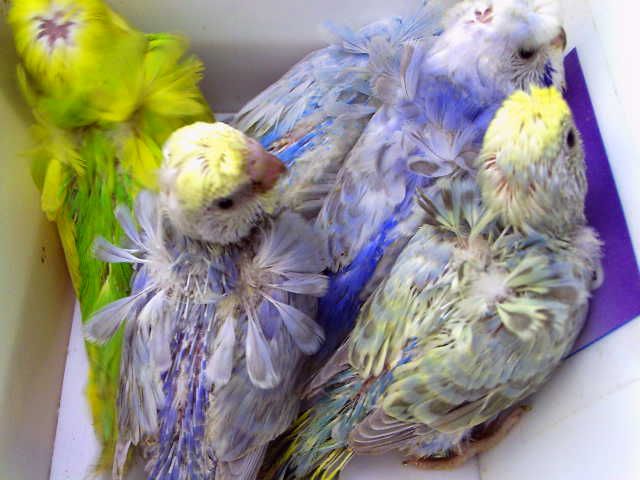
Feeding a young couple during breeding can be found here.
It happens that breeders have to take on the role of parents of chicks.
Contents
- 1 Reasons for artificial feeding of budgerigar chicks:
- 2 Heating of budgerigar chicks
- 3 There are several options for feeding budgerigars:
- 4 How often to feed budgerigar chicks
Reasons for artificial feeding of budgerigar chicks or failure5: 9003 9003 parents;
- disease of a chick requiring its immediate separation from the feathered family;
- quarantine;
- lack of appetite in the chick, its inability to feed on its own;
- death or illness of parents;
- a large number of chicks, parents can not cope;
- the female is going to the second clutch and her offspring interferes with her.
The safe period without food for a newly hatched chick is 12 hours.
This is how long a female can go without feeding her baby.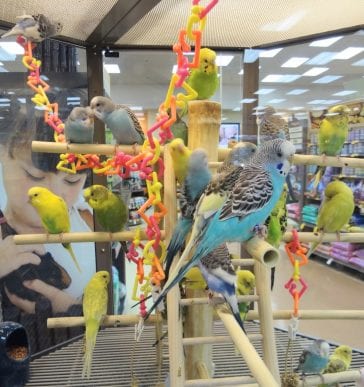 And, in case of a non-standard situation, you should count on this period of time to have time to prepare.
And, in case of a non-standard situation, you should count on this period of time to have time to prepare.
You can offer the chick to another pair or offer the male to feed it. Sometimes the bird accepts the baby and thus takes care of him. But it happens that only you can save the situation.
Photo: ddie gunnAlso, the female is often going to re-lay, her attitude towards the babies may change and you will need to look for additional housing for the young as soon as possible. More often this happens when the chicks are already able to feed on their own, but it happens that the female shows unmotivated aggression early and you need to save the parrots very quickly.
If your chick is only a few days old, then you can only feed with a special factory syringe or a homemade tool. To do this, you will need a 5 ml syringe and a tube that plays the role of a catheter. If you have the smallest chicks, then its diameter should not be more than 2.5 mm and it will be made of strong, soft material without sharp edges.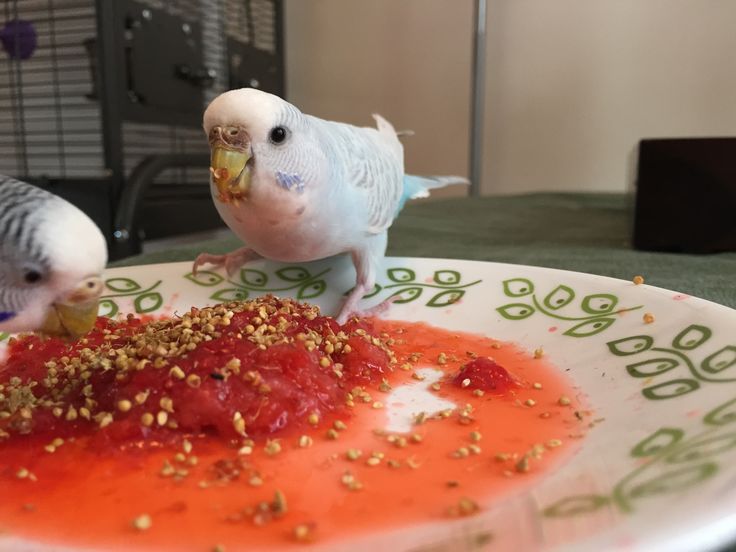
You should get rid of the syringe, for this you need to glow the cap and carefully remove the needle, drill a little more hole in the nozzle and put on the tube. Wrap the thread tightly around the edge of the tube and nozzle from the syringe. With a factory syringe, you don’t have to suffer like that - everything is provided for in the design.
The catheter must be lowered into the crop to a sufficient depth - if it is not installed correctly, the feed may enter the bird's trachea, which will lead to its death.
Therefore, having decided to breed budgerigars, you should already have a feeding syringe available.
Baby budgerigar heating
Also, fledglings require additional heating, which you will have to take care of. Devices that breeders use to keep chicks or sick birds warm are called brooders. You can buy them or make your own.
Photo: Magazine about birds The main thing is to be guided by the temperature parameters, since as you grow, the temperature in the room where the parrot is located should decrease.
Chick from a few hours to 4 days - 36 - 36.5°C; 7 days - 34°С; 14 days - 31 - 31.5 ° C; Day 21 - 24°C. Further, the chicks are moved to a box, which is similar in size to a nest box, in such a room the parrots themselves will be able to heat each other.
If you are raising a single chick, keep it in the brooder until day 25, where you lower the temperature to 24°C. Humidity during this period is maintained at 60%, as during masonry.
There are several options for feeding chicks:
Ready mix. Babies need vitamins and nutrients as well as vital enzymes. Therefore, NutriBird A19, a specialized and balanced food for budgerigar chicks, is just right. The mixture must be diluted not boiled, but heated to 39°C with water. Depending on the age of the chick, you adjust the density of the paste. This is the breeder's most convenient feeding option and one of the best ways to give your chick everything it needs to develop a strong body.
You can buy food for chicks - Padovan Baby Patee Universelle. Some breeders have successfully raised young on it.
Some breeders have successfully raised young on it.
Donor bird. Professional breeders use donor birds. Using a catheter, they load a grain mixture into the goiter of a bird, which is later pulled out with a probe. This is an unsafe procedure, so only professionals use this method. The main plus is that the substance that is extracted from the goiter of a parrot is a guarantee that the chick will receive all the vital substances for development.
Malt milk. A mixture of germinated grains with egg. Malt is prepared from germinated grain, which is crushed and diluted in half with water. Then filter through a strainer and add to the mixture. You should end up with a paste at 39°C.
Medical additive Mezim, Festal, etc. to the porridge. The difficulty lies only in the correct concentration and dilution of these enzymes. It is better to use them together with malt milk.
For power base baby budgerigar, you need to cook baby porridge without milk, sugar and salt: you can boil buckwheat, oatmeal or corn porridge.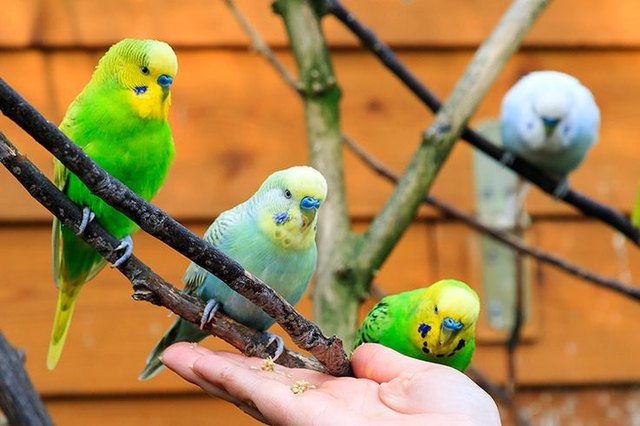 On the third day of the birth of a chick, you can add vegetable juices to its diet: carrot, beetroot and pumpkin. After the chicks are at least 10 days old, in addition to cereals, you can give a little apple, banana, pomegranate and fat-free cottage cheese.
On the third day of the birth of a chick, you can add vegetable juices to its diet: carrot, beetroot and pumpkin. After the chicks are at least 10 days old, in addition to cereals, you can give a little apple, banana, pomegranate and fat-free cottage cheese.
When the chicks are 20 days old, you can switch them to syringe feeding without catheter or even spoon feeding. From these days, add sprouted grains to the diet (pre-crush into pieces).
At the age of 30-35 days, the chicks can switch to dry grain, earlier if there is someone nearby who can show them how. But don’t worry, you don’t need to teach this, the chicks successfully begin to taste the grains themselves when the time comes.
How often to feed budgerigar chicks
The smallest chicks should be fed every two hours, at night every 4 hours. Gradually, six feedings with a break for the night are enough for the parrots.
Photo: Dawnstar Australis On the 20th day of life, babies can eat 4 times a day, as they approach 35 days, 3 times will be enough for the chicks.
Babies start to squeak when they are hungry, and the owners, in addition to the feeding schedule, listen to the sounds coming from the cage.
If your older bird is sick, you may need to feed it more frequently.
It is impossible to overfeed a parrot. Do not let the porridge flow out of the beak.
Try feeding them with a spoon, little by little the chicks will get used to it. If among them the eldest is the first to start eating on his own, there will be a chance that he will become an example for the rest of the parrots.
What to feed a baby budgerigar
Budgerigars are the most popular bird for home keeping. A variety of colors, a cheerful, playful disposition will give a good mood to any owner. Caring for them is not difficult, nutrition does not cause difficulties, but not everything is simple with chicks. The usual offspring of budgerigars is 3–12 babies hatched 18 days after laying eggs, subject to temperature conditions and maintaining the necessary air humidity.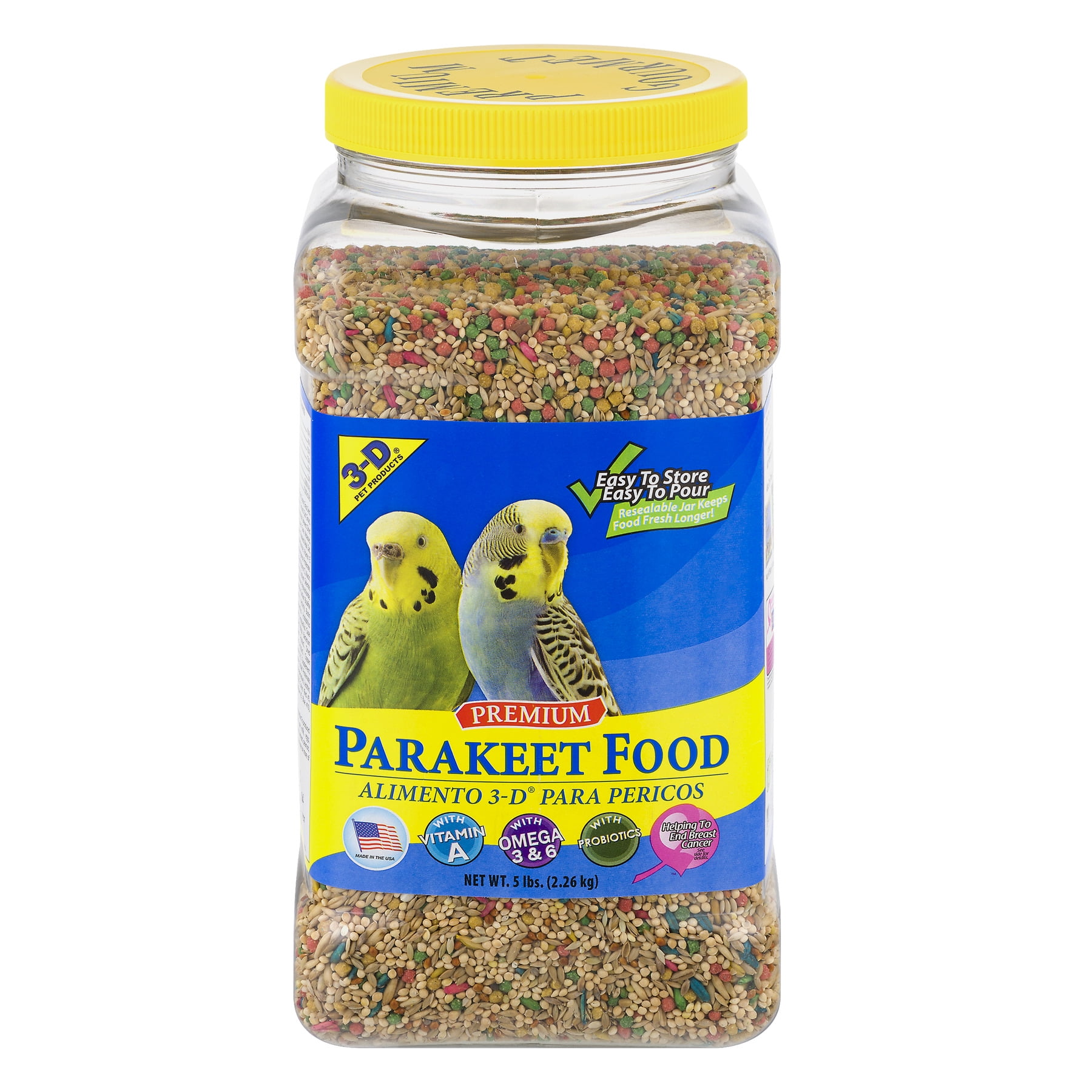 Occasionally, two chicks can hatch from one egg. First, the testicles hatch first. At hatching, the weight of the baby is about 1 gram. Every owner who decides to start breeding birds for the first time is worried about the question of how to feed not only an adult bird, but also small chicks. Proper care, maintenance, a competent diet are important for the health, long happy life of pets.
Occasionally, two chicks can hatch from one egg. First, the testicles hatch first. At hatching, the weight of the baby is about 1 gram. Every owner who decides to start breeding birds for the first time is worried about the question of how to feed not only an adult bird, but also small chicks. Proper care, maintenance, a competent diet are important for the health, long happy life of pets.
For a year, a pair of budgerigars can hatch offspring 4 times. This should not be allowed: the body of the female is depleted.
Small birds feed on a special substance in the form of a mucous mass mixed with almost liquid pieces of food and protein-rich milk produced in the mother's goiter or muscular stomach. After two or three days, grain, partially digested in the goiter, is added to the milk.
With the birth of babies, they are defenseless, completely dependent on their parents.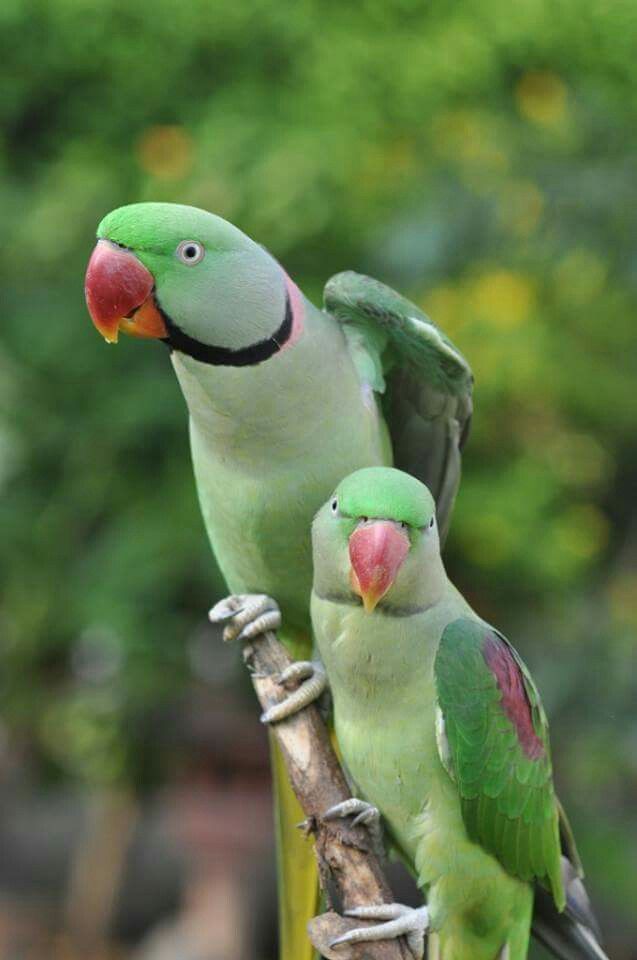 The female cares for, feeds the cubs from her beak, turning each one on its back, regardless of their number and timing of hatching. If the diet of the female contains a sufficient amount of germinated cereals, then the mixture for feeding babies is completely enough. Over time, the grown older birds receive grain food from the goiter, the remaining milk goes to the babies who hatched last. There are cases when, together with the mother, the father also feeds the offspring, in whose goiter grain processing also takes place. Intensive feeding of parrots provides them with all the necessary nutrients and enzymes that ensure the smooth functioning of the digestive tract.
The female cares for, feeds the cubs from her beak, turning each one on its back, regardless of their number and timing of hatching. If the diet of the female contains a sufficient amount of germinated cereals, then the mixture for feeding babies is completely enough. Over time, the grown older birds receive grain food from the goiter, the remaining milk goes to the babies who hatched last. There are cases when, together with the mother, the father also feeds the offspring, in whose goiter grain processing also takes place. Intensive feeding of parrots provides them with all the necessary nutrients and enzymes that ensure the smooth functioning of the digestive tract.
The owner of parrots must provide a full menu to parents, changing the diet in a timely manner. It is recommended to constantly add egg mixture, sprouted grains, greens to food.
After leaving the nest, the babies go completely under the care of the male, while the mother is preparing for the next clutch at this time. The feeding period lasts 1.5 months, after which the young become independent from their parents, begin to feed on their own.
The feeding period lasts 1.5 months, after which the young become independent from their parents, begin to feed on their own.
Artificial feeding
Sometimes there are situations when the female abandons her children, and the role of the parents of the parrots has to be performed by the owners themselves, feeding without the help of the real father and mother.
It is important to know: if a newly hatched chick does not eat for more than 12 hours, it may die.
Reasons for switching to artificial nutrition at home:
- large offspring, parents are unable to provide food for all children;
- female aggression, refusal to feed the cubs. Why this happens is difficult to answer. Perhaps she does not have or has not yet awakened maternal instinct. Maybe the reason was that you took a barely born chick in your arms or some other shock for the parrot;
- the baby loses his appetite, and he is not able to eat on his own;
- quarantine or sickness of the baby, requiring the separation of the diseased parrot from other birds for the duration of treatment;
- death of parents;
- the female is ready to produce the next clutch, the offspring becomes a hindrance to her.

Important to know : food deprivation of a barely born chick for more than 12 hours is critical, can cause death. It is necessary to remember this period and have time to prepare food. Sometimes the remaining one chick can be planted with an outside pair of parrots or another bird species. They will become foster parents to the baby, although the chance of survival of the chick is reduced; otherwise, you should take care of feeding the owner of the birds himself. The best candidates for this role will be Japanese finches, other types of parrots often refuse to accept a stranger, they can injure or peck him.
It is important for fledgling crumbs to maintain optimal temperature and humidity. To do this, periodically spray the nest with clean water. The temperature in it must be maintained at 33 ° C, lower or higher will cause the death of birds. The process can be organized using a cardboard box, constantly warming up its bottom. You can put a warm towel, use an incubator with a set mode that is optimal for chicks. From the twenty-first day, thermoregulation of young animals is improving, additional heating is not required.
The process can be organized using a cardboard box, constantly warming up its bottom. You can put a warm towel, use an incubator with a set mode that is optimal for chicks. From the twenty-first day, thermoregulation of young animals is improving, additional heating is not required.
Most experienced breeders advise feeding babies lightly watered down baby food heated to 37°C.
A chick who is two days old is given food using an ordinary insulin syringe or a catheter (cannula) attached to it, made of a plastic tube, wound with a thread. It is necessary to advance the tip further, preventing food from entering the trachea and choking the crumbs. If the bird is not weakened, it immediately begins to swallow food from the first drop. You need to feed until full saturation every two hours, even at night. Such food is given no more than 2 days - it is not intended for long-term feeding of chicks. Remains of food that have stuck to the baby's beak should be washed off with a decoction of chamomile, preventing the growth of bacteria and parasites.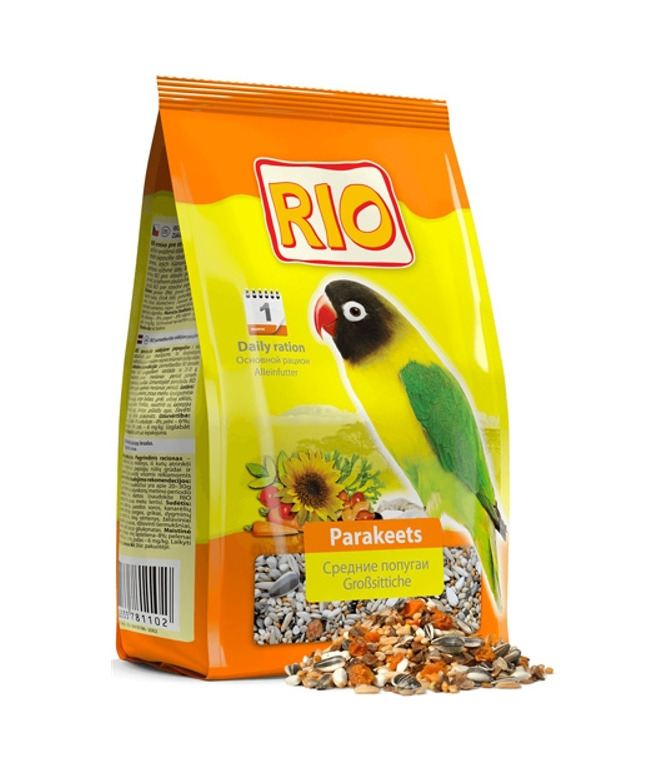 In small birds, food sometimes gets stuck in the beak, leading to cracks, you need to remove the remnants of food with a toothpick. Sometimes female parrots do not clean the paws of their babies, they accumulate leftover food, droppings, which harden during accumulation. In this case, you will have to wash the crumbs yourself.
In small birds, food sometimes gets stuck in the beak, leading to cracks, you need to remove the remnants of food with a toothpick. Sometimes female parrots do not clean the paws of their babies, they accumulate leftover food, droppings, which harden during accumulation. In this case, you will have to wash the crumbs yourself.
When artificially fed with a cannula, food is poured not into the beak, but into the goiter, this will prevent the chick from choking on the contents. You can prepare such a mixture: part of baby food, two parts of millet decoction, one part of oat decoction, part of a solution with glucose, vitamins, amino acids.
Foods
There are several types of feeding for newly hatched wavy.
Use of a donor bird
This method is used by experienced breeders who are professionally breeding birds. The grain mixture is fed into the goiter of the parrot through a catheter, from where it is sucked off with a probe in the digested form.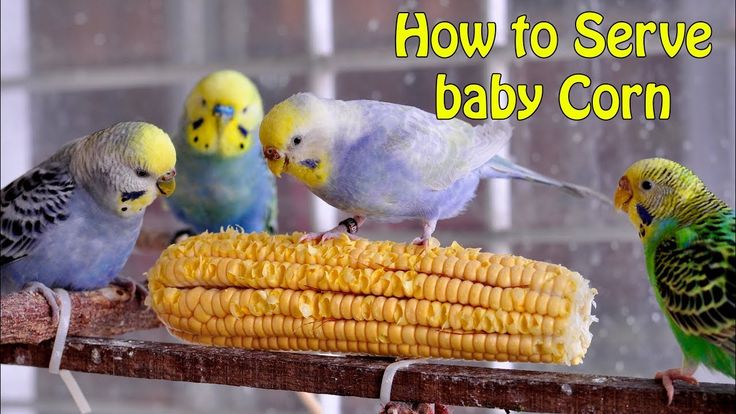 A dangerous, but the most effective type of food for artificial people, while all the substances necessary for life will enter the feathered body.
A dangerous, but the most effective type of food for artificial people, while all the substances necessary for life will enter the feathered body.
Malt milk feeding
Malt is prepared from sprouted grains, crushed, filtered, mixed with water, egg until a paste-like consistency is obtained. Feed heated to 39 ° C. At a lower temperature, the mixture is not absorbed, it begins to ferment in the goiter, the bird dies of hunger. Higher food temperatures cause burns.
Enzyme porridges
You can feed the wavy with porridge, mixing mezim or festal. The exact dosage of the preparations must be observed, preferably with malted milk.
Formula feeding
The most convenient way to feed the chicks. Special branded balanced ready-made feeds of good quality, for example, NutriBird A19 and A21, are diluted with warm water to the required density, taking into account the age of the young, fed to babies. With this daily diet, the birds receive the necessary components: lactobacilli, enzymes, nutrients for health and growth, similar to those produced by the mother's goiter.
Dairy-free cereals
Buckwheat, oatmeal or corn porridge are cooked without milk, salt and sugar. You can feed the birds with dairy-free rice porridge. From the third day of life, the menu includes vegetable juices from carrots, pumpkins or beets. You can add a piece of egg yolk rubbed through a sieve. From the tenth day, fruits are mixed in: banana, apple, low-fat cottage cheese.
On the twentieth day, they begin to feed a small bird from a spoon, try self-feeding, offering a crushed sprouted grain to a budgerigar.
From the age of thirty, they begin to introduce whole grains. Even if there is no one to show how to eat it, after a while the chicks will learn to peck themselves.
Water
When feeding birds with liquid cereals and mixtures, there is no need for water, with the exception of hot days. Over time, when the bird grows up and begins to feed on its own, clean filtered water should be constantly in the drinker.
How often to feed
Barely hatched wavy are fed every two hours, the night interval between meals is 4 hours.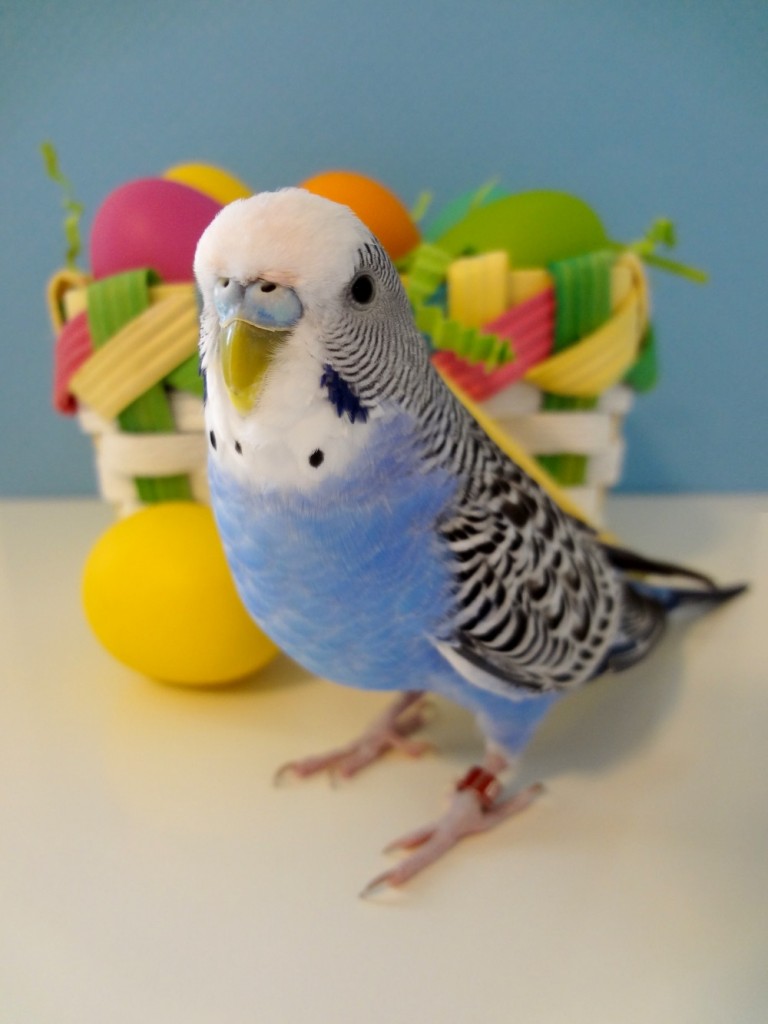 Gradually bring the food up to six times. From the twentieth day they give food 4 times. A chick who is 1 month old is transferred to three meals a day. You should listen to the sounds coming from the cage - hungry birds remind you of themselves with a squeak. Starting from the 21st day of life, parrots, overgrown with plumage, are fed strictly observing the regimen, sometimes doing it by force - they stop voicing when they get hungry.
Gradually bring the food up to six times. From the twentieth day they give food 4 times. A chick who is 1 month old is transferred to three meals a day. You should listen to the sounds coming from the cage - hungry birds remind you of themselves with a squeak. Starting from the 21st day of life, parrots, overgrown with plumage, are fed strictly observing the regimen, sometimes doing it by force - they stop voicing when they get hungry.
A sick adult parrot is fed more often.
It is necessary to give food to the feathered carefully, try not to oversaturate, take your time, watch that the food does not flow out of the beak. It is better to teach to eat from a spoon. Be patient - it won't work right away. At the same time, it is worth learning to eat only one chick on your own - the rest will follow its example. It is recommended to keep the syringe on hand for now - the parrot may be malnourished.
Tips for beginner ornithologists
In order for artificial nutrition to cause fewer problems, you should follow some tips:
- Single portion of food for wavy from 3 to 5 ml, no more cooking: food turns sour, causes digestive disorders.

- There is no need to supplement the birds with water: diluted mixtures contain a sufficient amount of liquid.
- From the age of seven, fruit juices are introduced into the diet: thanks to them, immunity is strengthened, growth is accelerated.
- In the cage, mineral feed is required for the correct formation of the bird's skeleton. You can give coarsely grated chalk or eggshells. A lack or excess of minerals disrupts development, growth, and sometimes leads to disease and even death.
- Grain mixtures are introduced from the moment the birds start sitting on the poles or perching on the owner's finger. Semi-liquid or thick porridge is cooked, offering a choice.
With proper care and feeding, the life of your pets will be long, happy, full. Having studied all the recommendations, tips, you can save the life of a little chick. You can be sure that artificially fed birds are more tame and trainable, they start talking better and faster than those raised in a nest with their family.

